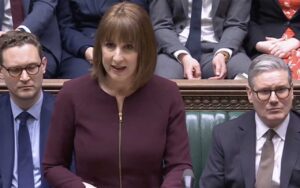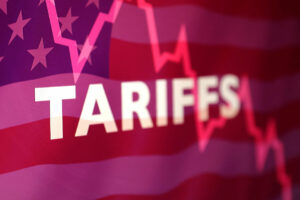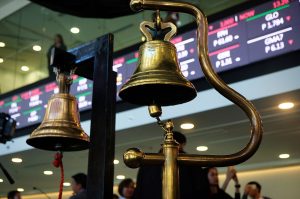THE University of Asia and the Pacific (UA&P) trimmed its first-quarter Philippine growth forecast amid worries over US President Donald J. Trump’s aggressive tariff policy.
In its latest The Market Call, UA&P said it cut its first-quarter gross domestic product (GDP) projection by 0.2% to 6%.
“Uncertainty surrounding Trump’s tariffs have mildly lowered our Q1-2025 GDP forecast to 6%,” it said.
If realized, this would be slightly faster than the revised 5.9% expansion in the January-to-March period last year.
Finance Secretary Ralph G. Recto and National Economic and Development Authority Secretary Arsenio M. Balisacan both expect first-quarter GDP growth to have settled at 6%.
The Philippine Statistics Authority will release first-quarter GDP data on May 8.
Mr. Trump disrupted the global trade system with his “Liberation Day” tariffs, including a 10% duty on goods from all countries.
The Philippines has been hit with 17% tariffs on its exports to the US but these, along with most of the reciprocal tariffs, have been suspended for 90 days.
However, global uncertainty remains elevated amid Mr. Trump’s erratic tariff policies and retaliatory measures by China and the European Union.
UA&P noted election spending could provide a “hefty boost” to the economy. The midterm elections are scheduled for May 12.
“Strong infrastructure spending in Q1 should see a softening in Q2 when election-related restrictions would mostly play out,” it added.
However, National Government spending “may modestly slow down (in the second half) as what happens during election years but still add to positivity.”
UA&P noted that slowing inflation and further rate cuts by the Bangko Sentral ng Pilipinas (BSP) could boost the economy.
“Below-target inflation of 1.8% year on year in March and sharp declines in crude oil and rice prices, slower GDP growth in the second half of 2024 should coax BSP to make another 25-bp rate cut in June and stimulate more consumer and investment spending,” UA&P said.
In the first quarter, inflation averaged 2.2%, well within the 2-4% target range of the central bank.
The BSP on April 10 cut rates by 25 bps to 5.5% from 5.75% previously.
“With the plunge in crude oil prices amid an expected global economic slowdown and abundant supply and lower international rice prices, inflation will likely average 2.2% in Q2 and Q3,” UA&P said.
“Thus, we expect BSP to cut its policy rates by another 25 bps in June regardless of what the Fed does,” UA&P said. — A.R.A.Inosante
















